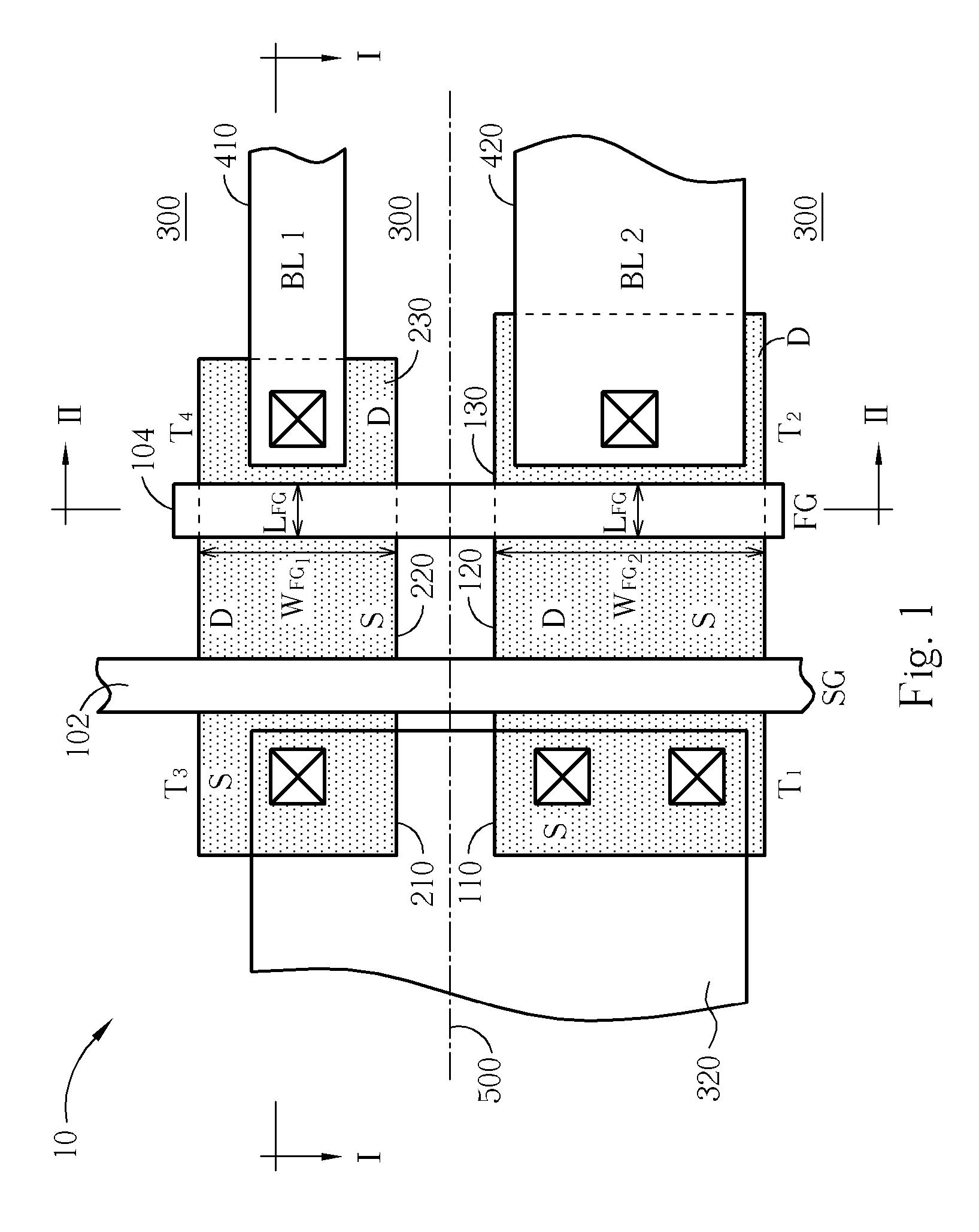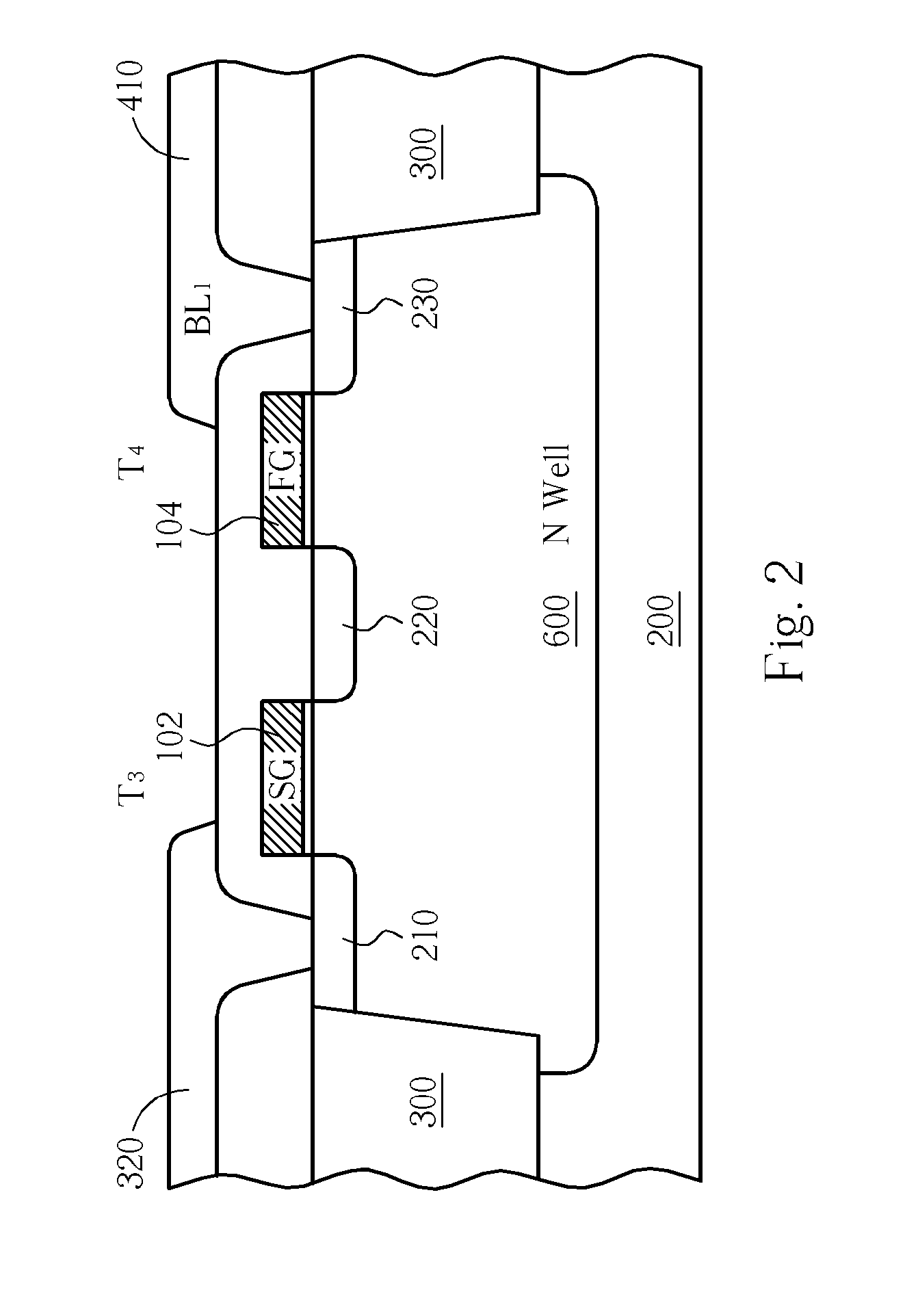Single poly non-volatile memory
a non-volatile memory, single-poly technology, applied in semiconductor devices, digital storage, instruments, etc., can solve the problems of large coupling area (p diffusion region—floating gate), complicating the cell fabrication process, and cell performance such as programming speed is still not satisfactory, so as to achieve faster program speed and lower current consumption
- Summary
- Abstract
- Description
- Claims
- Application Information
AI Technical Summary
Benefits of technology
Problems solved by technology
Method used
Image
Examples
Embodiment Construction
[0023] The present invention pertains to an erasable programmable non-volatile memory cell, which is capable of being programmed at a relatively faster programming speed. According to this invention, the current consumption for programming one cell is reduced. Preferred embodiments in accordance with this invention will now be discussed with reference to FIG. 1 to FIG. 9. It shall be appreciated that, in some of the figures or tables demonstrated in the specification, the abbreviation “PGM” refers to “program” or “programming”.
[0024] Please refer to FIG. 1 to FIG. 3, wherein FIG. 1 is an enlarged top view schematically showing 4-T (four-transistor) cell unit layout of an non-volatile memory device in accordance with one preferred embodiment of the present invention; FIG. 2 is a schematic cross-sectional diagram illustrating the cell unit 10 taken along line I-I; FIG. 3 is a schematic cross-sectional diagram illustrating the cell unit 10 taken along line II-II. As shown in FIG. 1, t...
PUM
 Login to View More
Login to View More Abstract
Description
Claims
Application Information
 Login to View More
Login to View More - R&D
- Intellectual Property
- Life Sciences
- Materials
- Tech Scout
- Unparalleled Data Quality
- Higher Quality Content
- 60% Fewer Hallucinations
Browse by: Latest US Patents, China's latest patents, Technical Efficacy Thesaurus, Application Domain, Technology Topic, Popular Technical Reports.
© 2025 PatSnap. All rights reserved.Legal|Privacy policy|Modern Slavery Act Transparency Statement|Sitemap|About US| Contact US: help@patsnap.com



